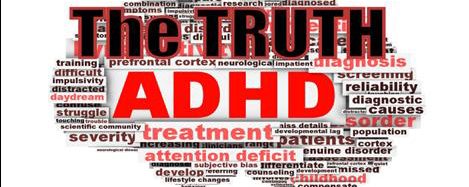As I mentioned previously in my last blog on Hyper-focus, Neuor-scientists have yet to completely and holistically comprehend, elucidate and explain the exact mechanisms, through which, stimulant therapy works to improve symptoms. Theories have been posited, however, to justify their prevalence in the pharmaceutical market, as seemingly the sole ADHD treatment option for most children and adults with ADHD.
Some research has led to the conclusion that these drugs work to modify the metabolism of Dopamine in specific brain regions, namely the “Claudate Nucleus, the frontal lobes, and thalamus…” (Madureira, D.Q.M.; et al. (2009)). On the other hand, other works demonstrate “…that the action of cognitive stimulants does not involve any brain area specifically but that…[they] promote the neural activity integration in cerebral circuits segregated by environmental stimulation.” (Madureira, D.Q.M.; et al). In other words, they somehow facilitate Dopamine functionality to promote effective attentional capacity in relation to external stimuli.
Most research indicates that cognitive stimulants chiefly influence Dopamine in the frontal, (cortical), areas of the brain, by generating greater amounts of the neurotransmitter in this area. However, because the Mesothalamic Dopamine levels (refer to last blog for explanation and definitions), have been found to also influence attentional focus, and, considering these medications likely alter Dopamine synthesis in this region as well, side effects of Hyper-Focus may become more pronounced under the influence of these prescribed substances.
At this point, your likely wondering, how exactly these side effects take are generated in the grand scheme of Dopamine action within the Brain. Well, the following bullet points elucidate how that process works:
-
- In the Frontal regions of the Brain, the neurotransmission of Dopamine, seems to be resistant to tolerance of DA Hyperactivity (excess DA), which is often developed in treated subjects, as consequence of long term stimulant treatment.
-
- In the subcortical regions (where DA is synthesised), however, tolerance develops more quickly and intensely.
-
- Because of DA tolerance build up in the mesothalamic (or subcoritical) areas, less Dopamine is active here.
-
- As was explained in my last blog, less Dopamine in this area leads to the excessive inhibition of neighboring (or non-tartget) stimuli.
-
- Consequently, this inhibited processing of non-target stimuli, results in the inability to shift one’s attentional focus between differing objects or points of attention, leading to Hyper-focus.
Hence, Psycho-stimulants, although thought to be effective in treating the disorder, may, in fact, exacerbate, mental rigidity, as a side effect of their influences on the Brain. Hyper-focus, then, although possibly (in the best case scenarios) may lead to improved comprehension of certain subjects or focal stimuli; it can also hinder those suffering from the symptom. The negative consequences of this kind of exaggerated focus are apparent when it disables an individual from attaining the kind of comprehensive grasp of a process, subject, etc., that results from normal, flexible, attentional shifting.
This, of course, begs the question…are cognitive stimulants actually resolving inattention symptoms in their totality, or are they, at times, intensifying attentional abnormalities, already manifested as a symptom of the disorder itself?

